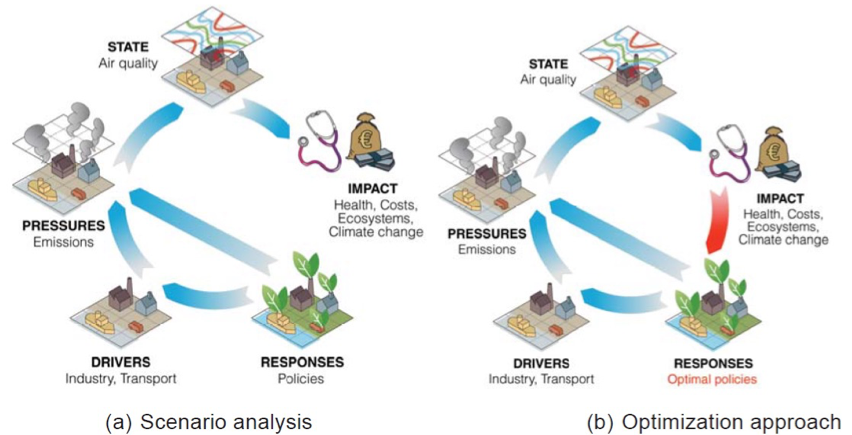Use of Models - Policy and Planning Intermediate

APPRAISAL Project
The 2008 European Air Quality Directive (2008/50/EC) on ambient air quality and cleaner air for Europe requires from Member States to manage air quality deterioration through the design of appropriate air quality plans for zones where the air quality does not comply with the legislated limit values. The basic core of the development procedure of air quality plans is the quantitative evaluation of the efficiency of proposed emission reduction measures to improve concentration levels. For this purpose, the Directive explicitly encourages the use of models in combination with monitoring, as air pollution models are the scientifically relevant tools to evaluate hypothetical mitigation scenarios. For this purpose, relevant authorities and research organizations of EU Member States have in the last decade developed and applied a wide range of different modeling methods to assess the effects of local and regional emission abatement policy options on air quality and human health. In this effort, integrated assessment modeling (IAM) methodologies have received increasing attention both in the scientific literature as well as in legislation.
IAM provides a suitable methodology to holistically address emission reductions for improving air quality, reducing exposure and protecting human health, by following the causal DPSIR (Driving Forces-Pressures-Sate-Impacts Responses) framework. The main advantage of the approach is that IAM can be applied adjusted in the DPSIR framework for the two basic methodologies used in evaluating alternative emission reductions, namely scenario analysis and optimization approach, as shown in Figure 1. The optimization approach includes an additional step of selecting the most efficient mitigation scenario overall, while reducing the associated costs, such as Cost Benefit Analysis or Multi-Criteria Analysis.

Figure 1: IAM approaches following the DPSIR scheme
A number of research efforts, such as the APPRAISAL FP7 project (http://servizi.terraria.com/appraisal/), have focused in reviewing current IAM practices deployed by different EU Member States for the development of local and regional air quality plans, in order to detect limitations and suggest policy recommendations with respect to legislation. A number of relevant topics where IAM is applied are examined, including source apportionment for reducing the contribution of the most polluting emission sources, emission reduction measures at different scales, uncertainty in IAM, and integrated modeling and monitoring methods to assess air quality policies.
Relevant reading material in this Note includes the APPRAISAL deliverable on current IAM policy practices in Europe (D2.7), as well as scientific publications in the above mentioned topics.
Material
- Final Report Summary - APPRAISAL (Air Pollution Policies foR Assesement of Integrated Strategies At regional and Local scales). https://cordis.europa.eu/project/id/308395/reporting
- APPRAISAL Project (2013) D2.7 Summary review of air quality and health assessment methods, University of Aveiro. http://appraisal-fp7.terraria.com/site/images/APPRAISAL_D27_final2.pdf
- Carnevale C., G. Finzi, E. Pisoni, M. Volta, G. Guariso, R. Gianfreda, G. Maffeis, P. Thunis, L. White, G. Triacchini (2012). An integrated assessment tool to define effective air quality policies at regional scale, Environmental Modelling and Software, 38, 306-315.
- Carnevale C., G. Finzi, G. Guariso, E. Pisoni, M. Volta (2012). Surrogate models to compute optimal air quality planning policies at a regional scale, Environmental Modelling and Software, 34, 44-50.
- Fragkou E., I. Douros, N. Moussiopoulos, and C. A. Belis (2012). Current Trends in the use of Models for Source Apportionment of Air Pollutants in Europe. International Journal of Environment and Pollution 50 (1-4): 363-375.
- Thunis P., A. Pederzoli, D. Pernigotti (2012). Performance criteria to evaluate air quality modeling applications, Atmospheric Environment, 59, 476-482.
Note prepared by E. Fragkou (created 11/2021, updated 05/2023). For corrections or expansions please contact us.